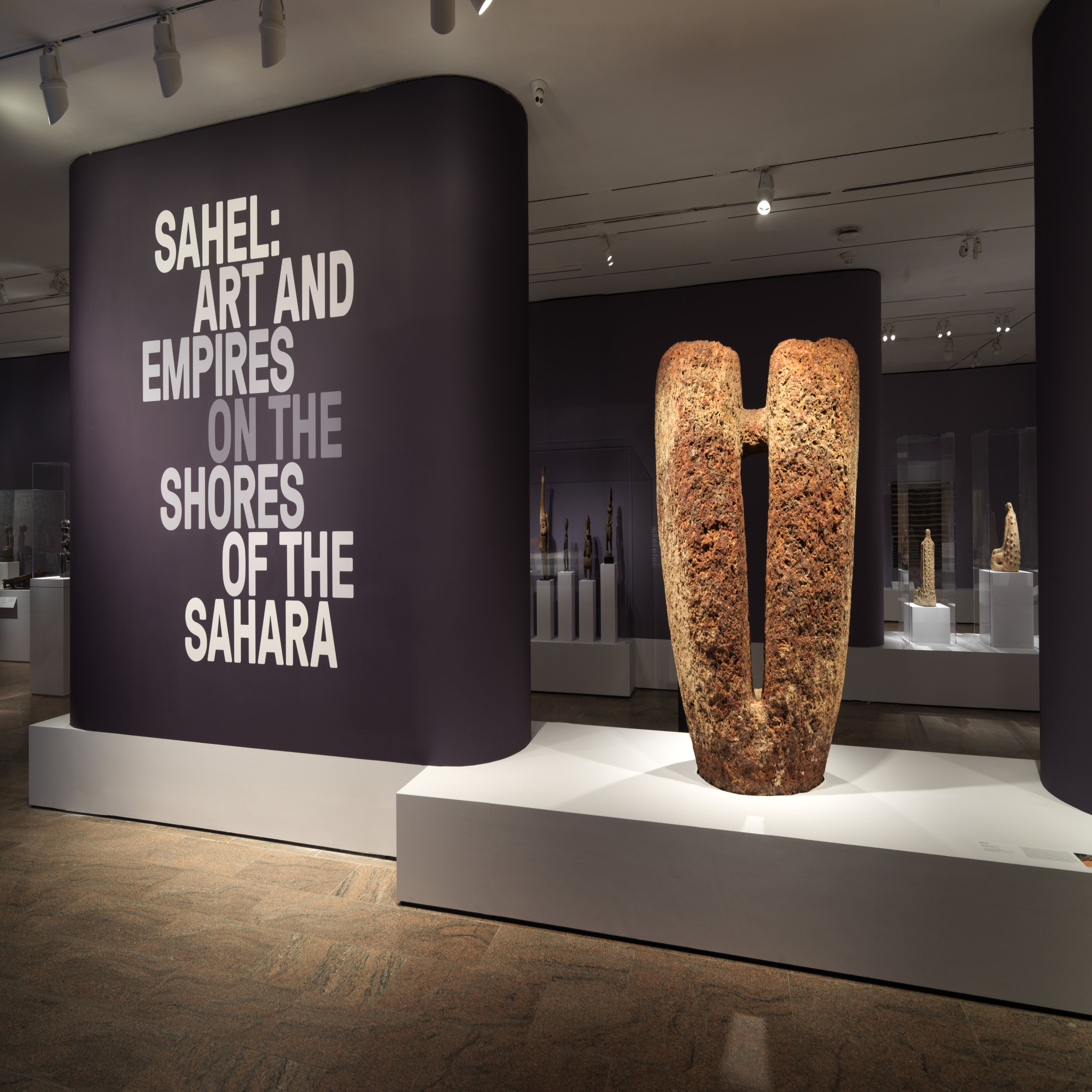The Met's New Exhibition Celebrates the Rich Artistic History of the Sahel Region
'Sahel: Art and Empires on the Shores of the Sahara' is an enxtensive look into the artistic past of the West African region.
West Africa's Sahel region has a long and rich history of artistic expression. In fact, pieces from the area, which spans present-day Senegal, Mali, Mauritania, and Niger, date all the way back to the first millennium. Sahel: Art and Empires on the Shores of the Sahara, a new exhibition showing at The Metropolitan Museum of Art in New York City, dives into this history to share an expansive introduction to those who might be unfamiliar with the Sahel's artistic traditions.
"The Western Sahel has always been a part of the history of African art that has been especially rich, and one of the things that I wanted to do with this exhibition, that hasn't done before, is show one of the works of visual art...and present them within the framework of the great states that historians have written about that developed in this region," curator Alisa LaGamma tells Okayafrica.She worked with an extensive team of researchers and curators from across the globe, including Yaëlle Biro, to bring the collection of over 200 pieces to one of New York City's most prestigious art institutions.
"The exhibition will bring into focus such transformative moments as the development of urbanism, the rise and fall of political dynasties, and the arrival of Islam," reads a press release from The Met. It features wall to wall artifacts ranging from ancient terracotta figures to ceremonial "boubous" and handwritten manuscripts, which contain ancient knowledge.
As the institution notes, several of these items traveled on loan to the United States for the first time, from the national collections of each respective country. Some highlights include an "ancient terracotta equestrian figure (3rd through 11th century) excavated at the site of Bura in 1985, from the Institut the Institut de Recherches en Sciences Humaines, Université Abdou Moumouni de Niamey, Niger," as well as "a rare 12th-century gold pectoral from Rao that is a Senegalese national treasure from the collection of the Institut Fondamental d'Afrique Noire Cheikh Anta Diop, Dakar, and the Timbuktu manuscripts from the Mamma Haidara Memorial Library in Mali."
Sahel: Art and Empires on the Shores of the Sahara will be showing at The Met until May 10. A number of programs including the upcoming panel discussionStorytelling and West African Cinema, curator tours, performances and more will take place throughout the spring. Learn more about the show and programs here, and preview the exhibition below.
Photo credit: © Photo Maurice Ascani. www.photographe-niger.com
Equestrian Bura-Asinda-Sikka Site, Niger 3rd–10th century Terracotta Institut de Recherches en Sciences Humaines, Université Abdou Moumouni de Niamey, Niger (BRK 85 AC 5e5)
Installation view of Sahel: Art and Empires on the Shores of the Sahara © The Metropolitan Museum of Art 2020, photography by Anna-Marie Kellen.
Photo credit: Mamma Haidara Memorial Library
Curing Diseases and Effects both Apparent and Hidden Timbuktu, Mali 1733 Manuscript on paper Mamma Haidara Memorial Library, Timbuktu, Mali (116)
Photo: Musée National du Mali
Reclining Figure Middle Niger civilization, Jenne-jeno, Mali 12th–14th century Terracotta Musée National du Mali, Bamako (R 88-19-275)
Photo credit: Photo by Antoine Tempé
Rao/Nguiguela, Senegal 12th–13th century Gold Institut Fondamental d'Afrique Noire Cheikh Anta Diop, Dakar, Senegal (41 32)
Photo: Courtesy Menil Collection
Kneeling Female Figure with Crossed Arms Middle Niger civilization, Mali 12th–14th century Terracotta The Menil Collection, Houston (1982-20 DJ)
Photo :© The Metropolitan Museum of Art, photo by Paul Lachenauer
Bala Mandinka peoples, Guinea or Mali 19th century Wood, gourd, hide, and membrane The Metropolitan Museum of Art, New York. The Crosby Brown Collection of Musical Instruments, 1889 (89.4.492)
Collection, photo by Oleg Kuchar, Ulm
Tunic West Africa Before 1659 Cotton and indigo Weickmann Collection, Museum Ulm, Germany (D.41) Photo credit: © Museum Ulm— Weickmann
Photo credit: Photo by Antoine Tempé
Female Figure Ghana empire, Kumbi Saleh, Mauritania 7th–11th century Terracotta Office National des Musées de Mauritanie, Nouakchott, Mauritania (KS72 KI 94)
- Bringing African Artifacts Home - OkayAfrica ›
- 7 African Curators You Should Know - OkayAfrica ›
- These Portraits by African Photographers Reveal the Power In Self ... ›
- This Exhibition is Uniting the Artistic Traditions of Mexico and ... ›
- This Exhibition in Accra Celebrates the Brilliance of African Women ... ›
- Former Niger President Mamadou Tandja Has Died - OkayAfrica ›
- Niger's Presidential Election Results Sets off Second Election Run Amidst Increasing Violence - OkayAfrica ›
- In 'Aba Women Riot' Nigerian Artist, Fred Martins, Reinterprets a Groundbreaking Moment In African History - OkayAfrica ›
